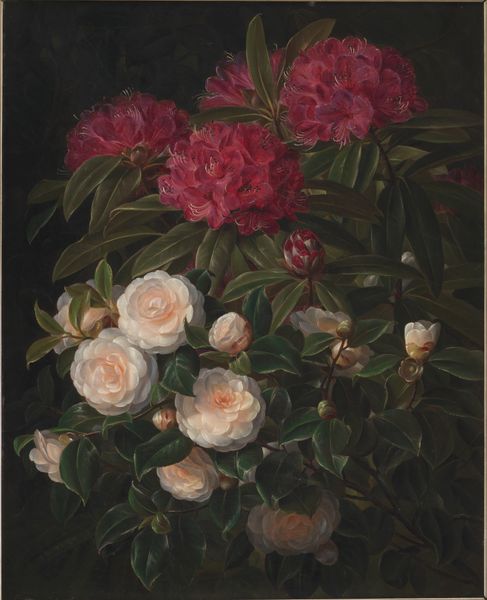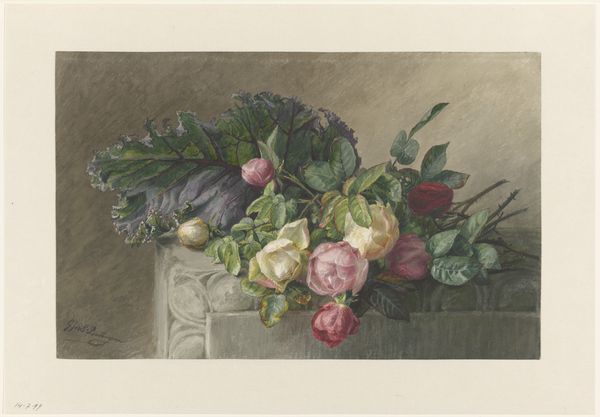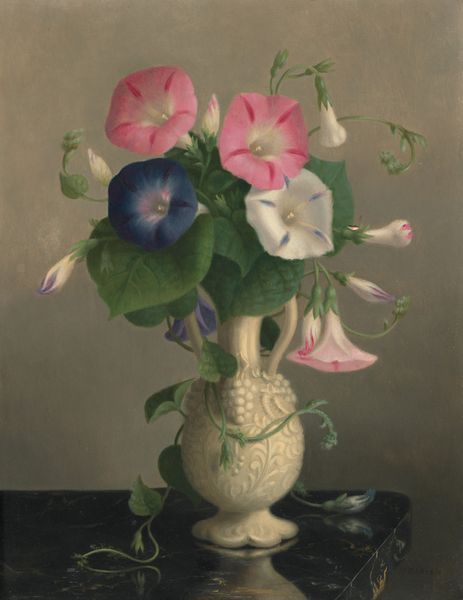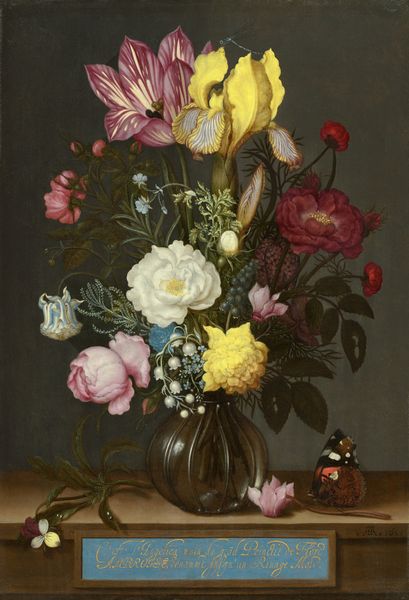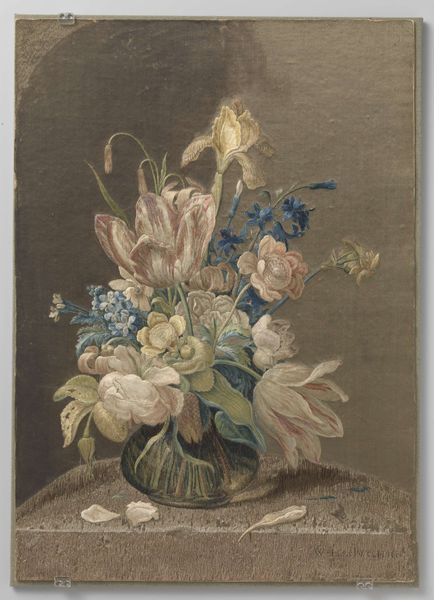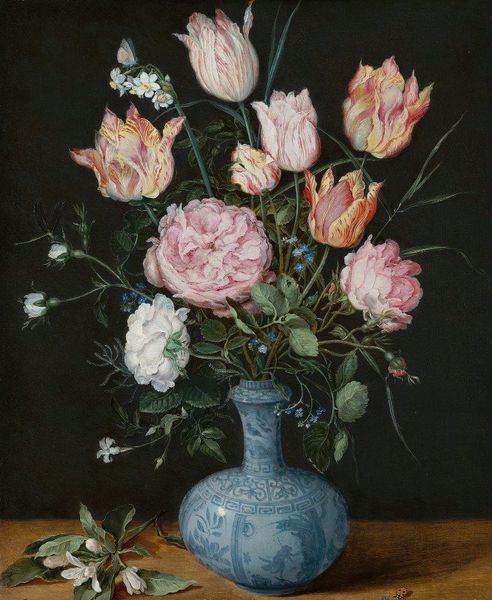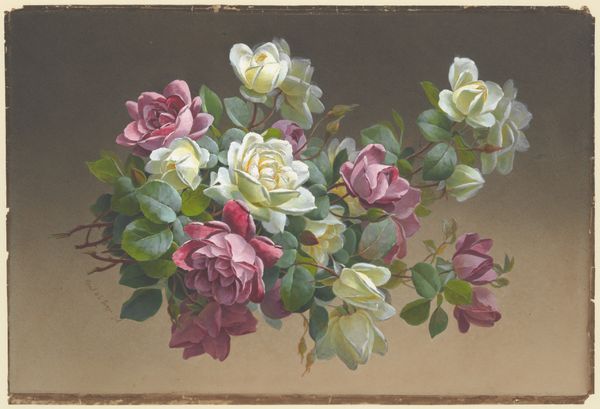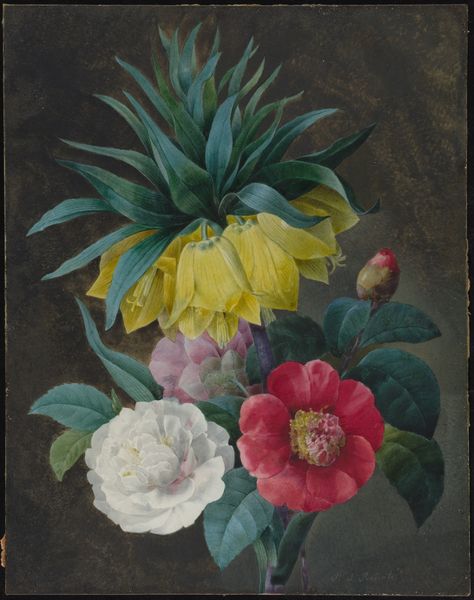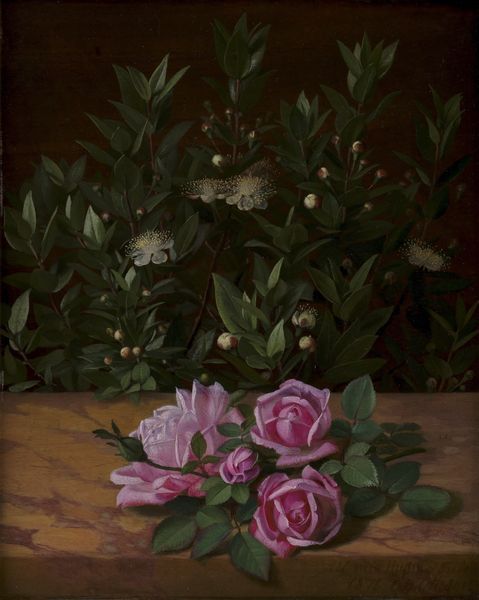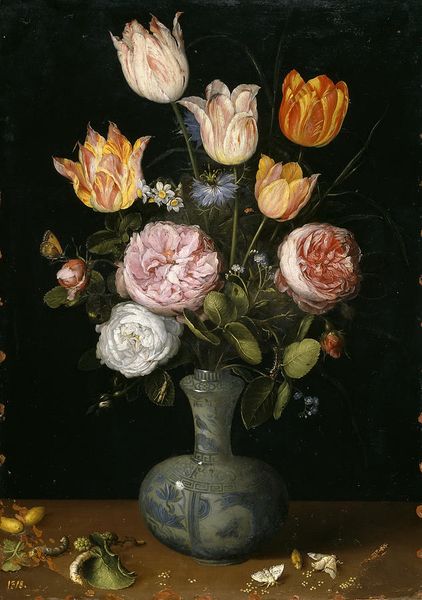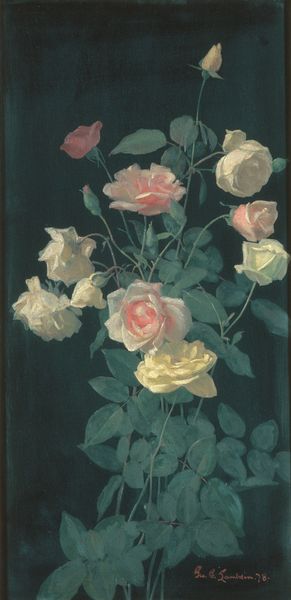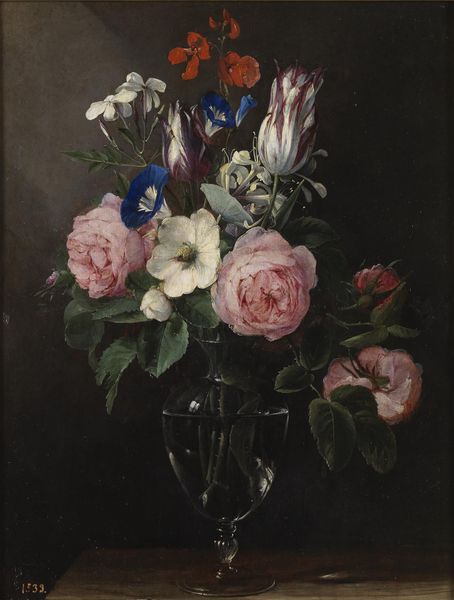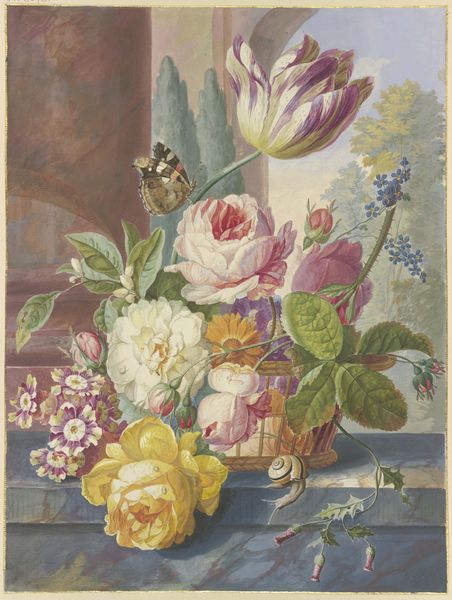
drawing, painting, watercolor
#
drawing
#
painting
#
watercolor
#
romanticism
#
watercolor
Dimensions: sheet: 40 x 31.5 cm (15 3/4 x 12 3/8 in.)
Copyright: National Gallery of Art: CC0 1.0
Editor: We're looking at Pierre Joseph Redouté's "Pink Roses in a Vase" from 1838, rendered beautifully in watercolor. I’m struck by the contrast between the soft, delicate roses and the almost somber dark background. What stories do you see woven into this seemingly simple still life? Curator: Beyond its surface appeal, consider what a seemingly simple image of flowers communicated in 1838. Redouté was known as the "Raphael of Flowers" and catered to an elite clientele, often women. Think about the social implications. Who had access to art and education? How were women of this era, particularly within the upper classes, engaging with the natural world, and what power structures defined that engagement? Editor: So, the image might seem apolitical, but the very act of painting flowers, and who had access to those paintings, tells us about class and gender. Is that right? Curator: Precisely. Consider also the symbolism inherent in flowers themselves. During this period, the "language of flowers" was highly developed. Roses, especially pink ones, often symbolized grace, gentility, and admiration. Whose gaze are these roses intended for? Who is being invited into this space of beauty and privilege, and who is excluded? Redouté wasn't just painting roses; he was painting a portrait of a specific societal value system. How might the presentation of beauty uphold social hierarchies? Editor: That’s fascinating! I hadn't thought about the encoded social meanings. I guess a rose is never just a rose, right? It's like a visual representation of power. Curator: Exactly. And that’s where art history becomes a powerful tool. It helps us dissect those systems and understand their historical roots, while interrogating whether these power dynamics remain present. Editor: Thank you. It makes me want to research how flower paintings changed across social movements and different historical periods. Curator: Indeed, and consider the intersectional element between social movements and botanical art history as part of your ongoing work.
Comments
No comments
Be the first to comment and join the conversation on the ultimate creative platform.
